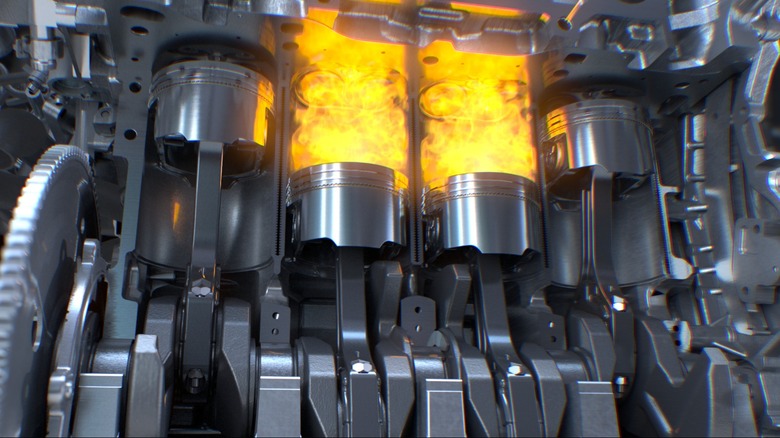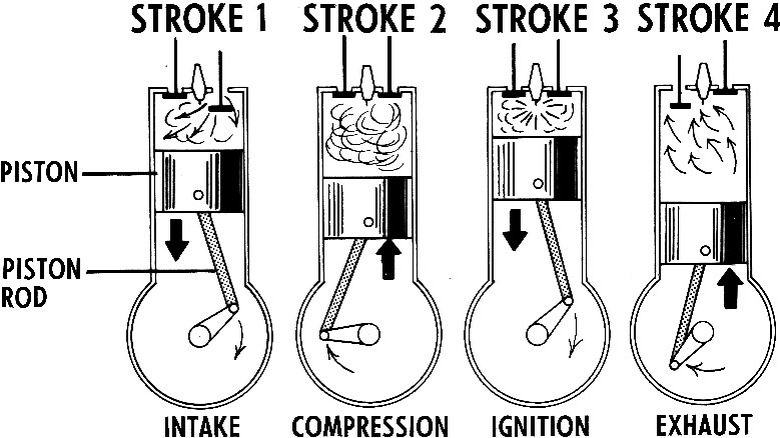What Does 'Stroke' Mean On An Engine
You may have heard your car has a four-stroke engine, but you're not sure what that means. Why are there four? And what is a stroke, anyway? A modern gas engine most commonly uses pistons and a crankshaft to power the wheels of a car or truck. The piston is basically a round thing on a stick (called a connecting rod) that travels in a close-fitting, round cylinder. When the piston moves all the way up in the cylinder (which mechanics call top dead center, or TDC), or all the way down (to bottom dead center, or BDC), that full movement in each direction is called a stroke.
As the piston moves up and down, the connecting rod is moving with it. The rod is attached with a pin (the wrist pin) so it can swing a little from side to side. This swinging movement allows the other end of the connecting rod to be attached to a part that moves in a completely different direction — the crankshaft. The crankshaft rotates, and that's what powers the parts that move the car's wheels. With each rotation of the crankshaft, the attached pistons go up and down once.
Although a piston may seem like it's just going up and down, it's doing something different each time. Read on to find out why we count strokes.
What do strokes do?
A four-stroke engine uses four motions of a piston to complete one cycle of combustion. The first stroke of a cycle is the intake. The piston moves down to BDC, making space in the cylinder for fuel and air to be sucked or injected in through a valve.
The compression stroke comes next. The piston moves up, squeezing air and fuel into a tighter space and making combustion more powerful — like a controlled pipe bomb. A spark plug ignites the fuel at the top of this stroke. The power stroke is third, when expanding gases from exploding fuel shove the piston down the cylinder, turning the crankshaft and powering the wheels. The exhaust stroke is the fourth and last one in the cycle: the piston moves up to TDC, pushing burnt gases out of the cylinder. This is commonly how modern combustion engines work.
Some engines use fewer strokes per cycle. A two-stroke engine accomplishes everything in two movements of the piston. But it's sloppier, because it burns oil and leaves some fuel unburnt. It uses a different oil, and because it pollutes more, the two-stroke engine is on the endangered list. One last fun fact about the word stroke: it also means the distance a piston travels, so you can "stroke" an engine by changing that distance to accommodate more air and fuel for a mightier power stroke.

